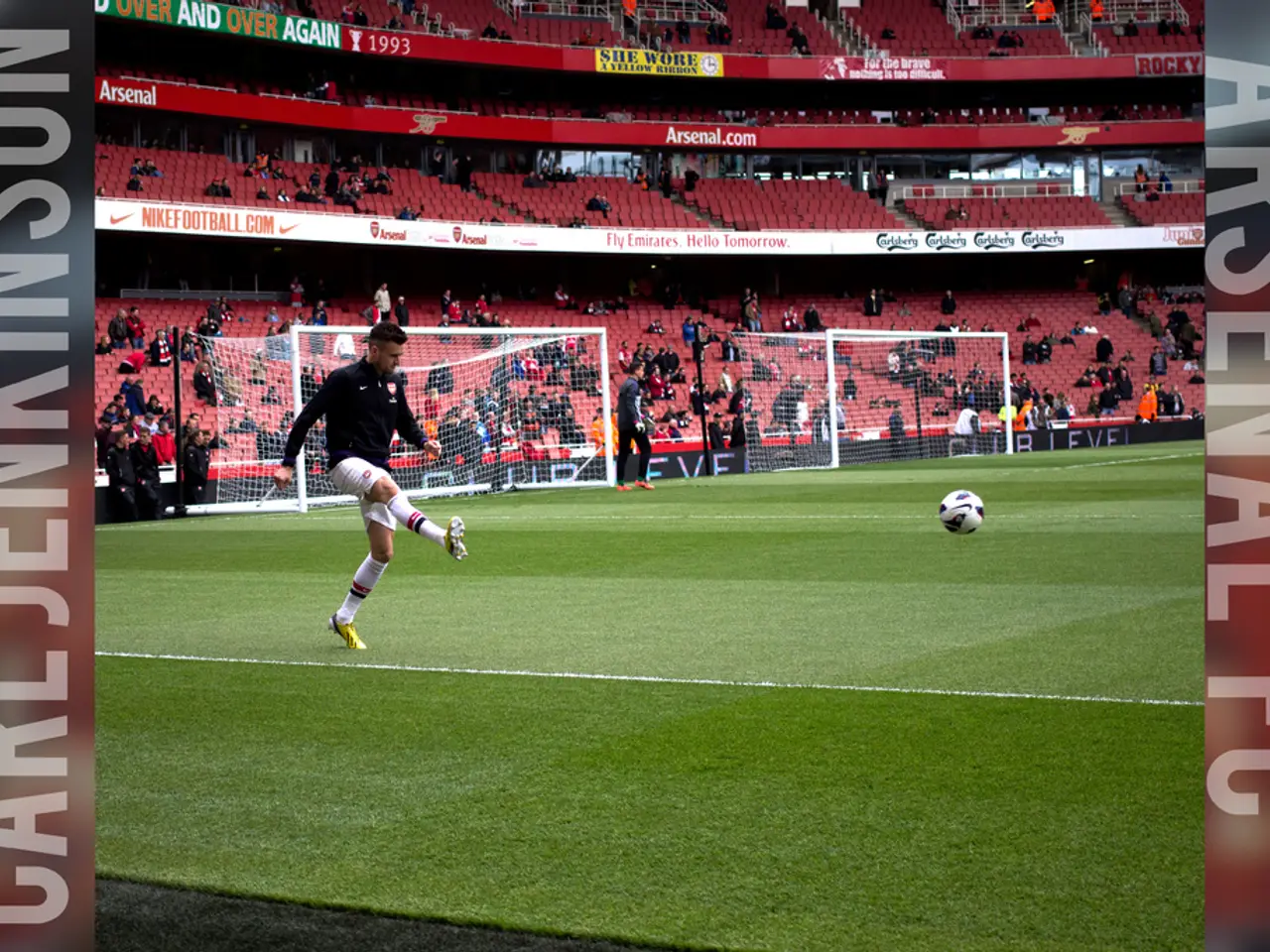Directly from the source: Adidas targets Direct-to-Consumer (DTC) sales to account for half of its total revenue by 2025.
Adidas, the renowned German sportswear manufacturer, has announced a transformative four-year strategic plan called "Own the Game". The initiative aims to propel the company towards becoming a predominantly direct-to-consumer (DTC) led model by 2025 [1].
Shift Towards DTC and Digital Acceleration
The strategy involves a significant shift towards digital acceleration and closer consumer engagement. Adidas aims to achieve 50% of its total sales from DTC channels by 2025, up from 30% in 2019 [1]. DTC is expected to drive more than 80% of Adidas' net sales growth over the next four years, according to CEO Kasper Rorsted [3].
Investing in Marketing and Supply Chain Management
To achieve this goal, Adidas has committed to spending an additional €1.1 billion on marketing between 2021 and 2025 to accelerate brand momentum and build consumer loyalty [1]. The company also anticipates increased complexity in its supply chain due to individual product returns and omnichannel offerings associated with the DTC model [4].
Product Innovation and Localization
The plan includes strategic product transitions away from previous collaborations to diversified, high-performance franchises such as Adios Pro Evo and Boston 13 running shoes, and culturally resonant launches like the Samba pack in Asia [2]. Adidas tailors offerings to regional markets, such as Greater China, Japan, and South Korea, fueling significant growth in these key areas through localization [2].
Sustainability and Community Investment
Alongside commercial goals, Adidas continues environmental and social initiatives, integrating them into the brand's identity [4]. The company has partnerships with sustainable athletics companies like Allbirds and aims to make nine out of 10 of its products sustainable by 2025 and be climate neutral overall by 2050 [5].
E-commerce Growth and Physical Retail Transformation
Adidas' e-commerce sales are expected to double, reaching between €8 billion and €9 billion by 2025. The company also plans to double its Halo stores by 2025 and revamp its concept store strategy, aiming for larger concept stores but fewer of them [6].
New Product Categories and Investments
Adidas plans to introduce a new product category, Adidas Sportswear, focusing on the athleisure market, which will launch in 2022. The company also announced a women's-focused product line called Formotion, which it referred to as its "most supportive activewear to-date" [6]. Adidas expects to invest an additional €1 billion into marketing by 2025 and funnel over €1 billion into its digital transformation [6].
In conclusion, Adidas' "Own the Game" strategy represents a comprehensive approach to digital and physical retail transformation, increased marketing investment to support direct consumer relationships, and product innovation tailored to global-local dynamics. The company anticipates that this shift will drive long-term margin improvement, strengthen market share, and bring significant market share gains, higher revenues, and margins.
Sports platforms, like Adidas, are utilizing digital advancements to foster closer consumer connections, aiming to expand their direct-to-consumer (DTC) sales from 30% in 2019 to 50% by 2025. technology Investments, such as an additional €1.1 billion in marketing between 2021 and 2025, are being made to boost brand presence and customer loyalty.
Indexed in this strategic plan is the shift away from previous collaborations towards diversified, high-performance franchises, such as Adidas' Boston 13 running shoes, as well as culturally resonant launches in various markets, like the Samba pack in Asia. Business policies also revolve around regional market tailoring, including Greater China, Japan, and South Korea, which have resulted in significant growth.
Adidas, understanding the importance of climate issues, continues environmental and social initiatives, aiming to make nine out of 10 of its products sustainable by 2025 and become climate neutral overall by 2050. Moreover, the company has formed partnerships with sustainable companies like Allbirds.
The transformation of physical retail is also in focus with plans to double Halo stores by 2025 and revamp the concept store strategy, aiming for larger stores but fewer of them. In the space sector, Adidas plans to double its e-commerce sales, reaching between €8 billion and €9 billion by 2025.
There's a substantial exploration beyond traditional sports apparel with Adidas' commitment to introduce a new product category, Adidas Sportswear, focusing on the athleisure market and a women's-focused product line, Formotion. With fresh investments in marketing and digital transformation amounting to an additional €2 billion by 2025, the company is poised to capture significant market share and drive growth in revenue and margins.
Culturally, this strategy embodies the remarkable convergence of lifestyle trends, with an emphasis on the sports and casual wear sectors, and editorial perspectives that highlight the need for innovative, versatile, and environmentally friendly products. Moreover, policy stances, such as free trade agreements and sports development initiatives, are expected to bolster Adidas' growth trajectory, ultimately benefiting the global economy.








